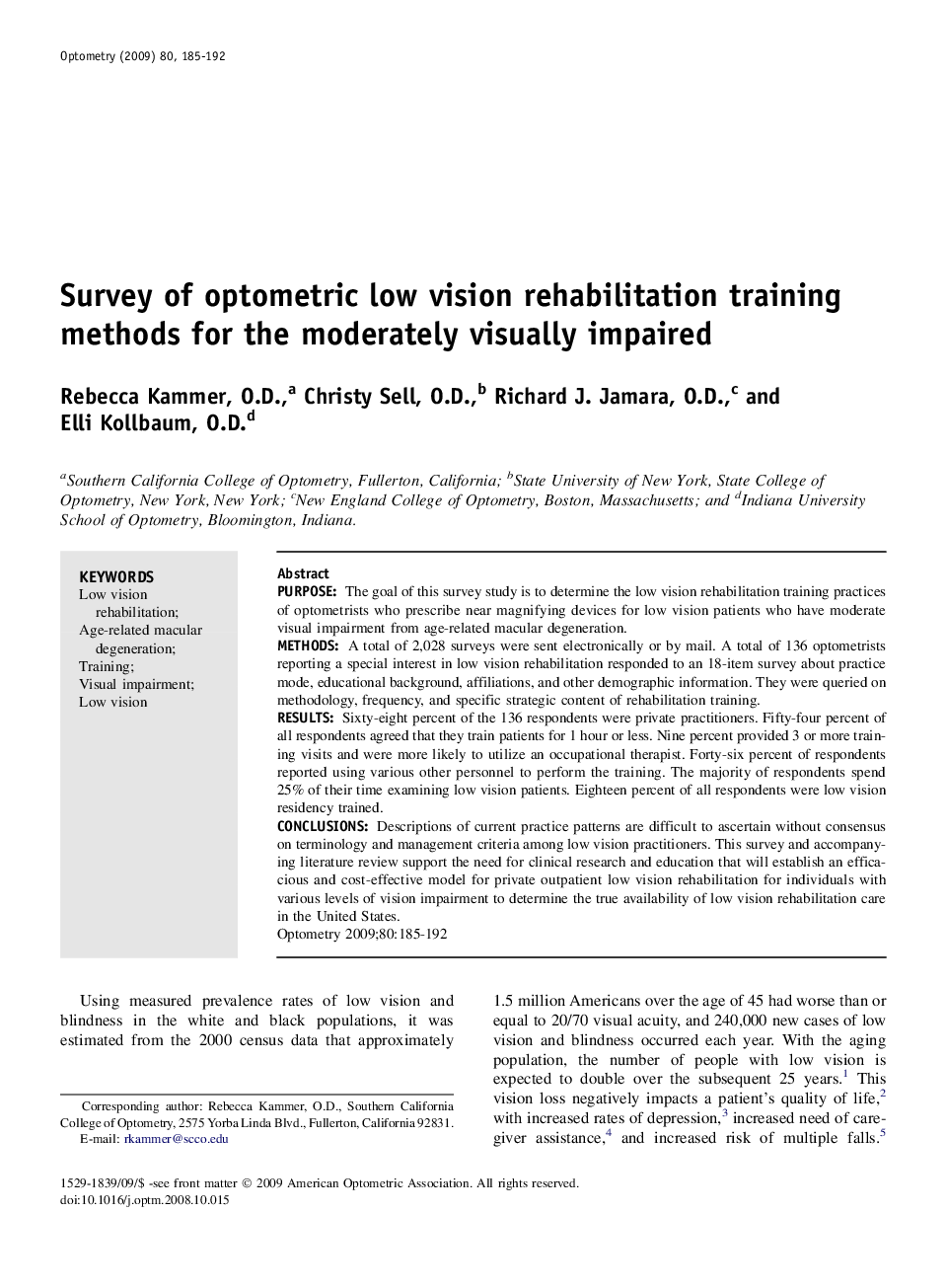| Article ID | Journal | Published Year | Pages | File Type |
|---|---|---|---|---|
| 2697186 | Optometry - Journal of the American Optometric Association | 2009 | 8 Pages |
PurposeThe goal of this survey study is to determine the low vision rehabilitation training practices of optometrists who prescribe near magnifying devices for low vision patients who have moderate visual impairment from age-related macular degeneration.MethodsA total of 2,028 surveys were sent electronically or by mail. A total of 136 optometrists reporting a special interest in low vision rehabilitation responded to an 18-item survey about practice mode, educational background, affiliations, and other demographic information. They were queried on methodology, frequency, and specific strategic content of rehabilitation training.ResultsSixty-eight percent of the 136 respondents were private practitioners. Fifty-four percent of all respondents agreed that they train patients for 1 hour or less. Nine percent provided 3 or more training visits and were more likely to utilize an occupational therapist. Forty-six percent of respondents reported using various other personnel to perform the training. The majority of respondents spend 25% of their time examining low vision patients. Eighteen percent of all respondents were low vision residency trained.ConclusionsDescriptions of current practice patterns are difficult to ascertain without consensus on terminology and management criteria among low vision practitioners. This survey and accompanying literature review support the need for clinical research and education that will establish an efficacious and cost-effective model for private outpatient low vision rehabilitation for individuals with various levels of vision impairment to determine the true availability of low vision rehabilitation care in the United States.
